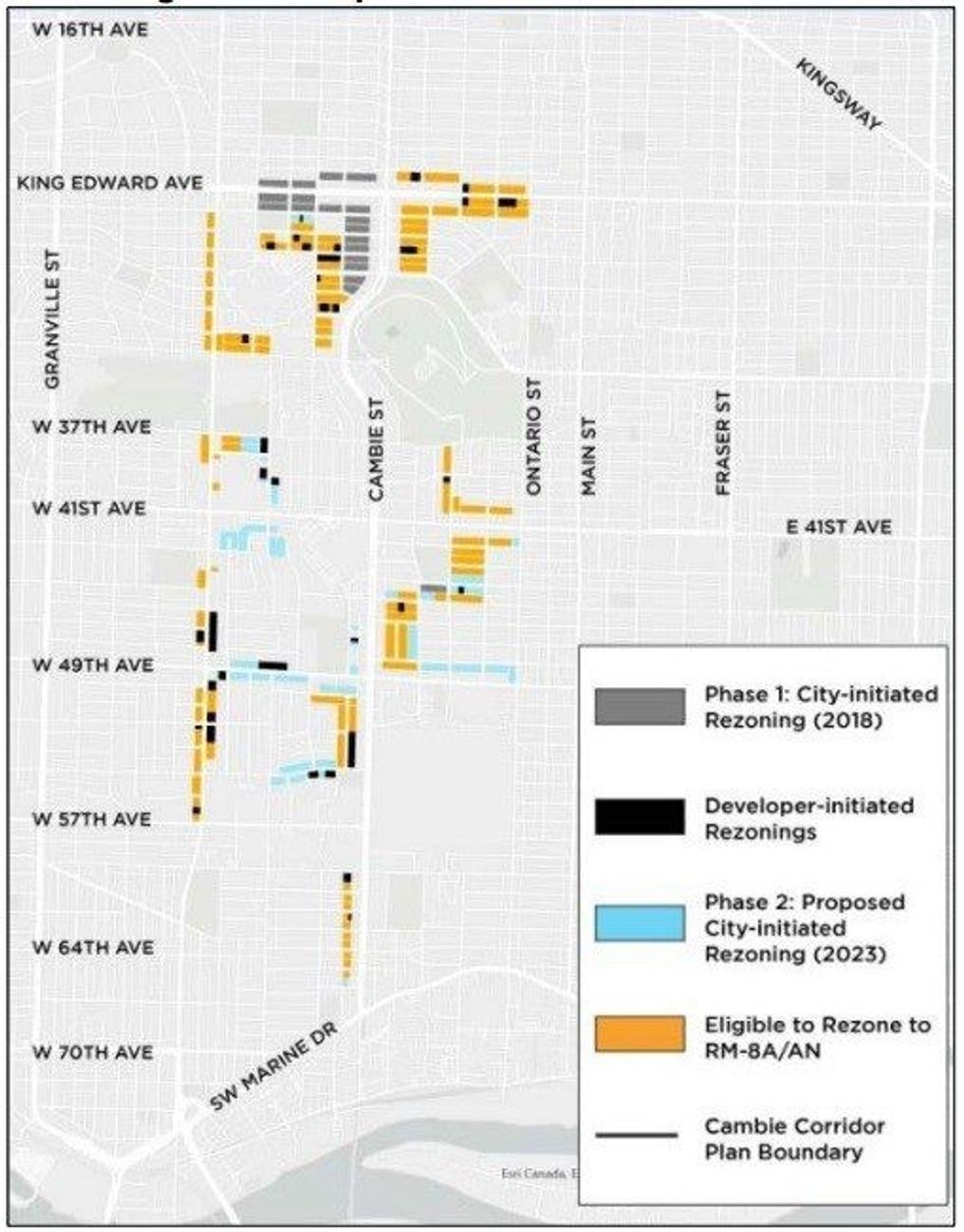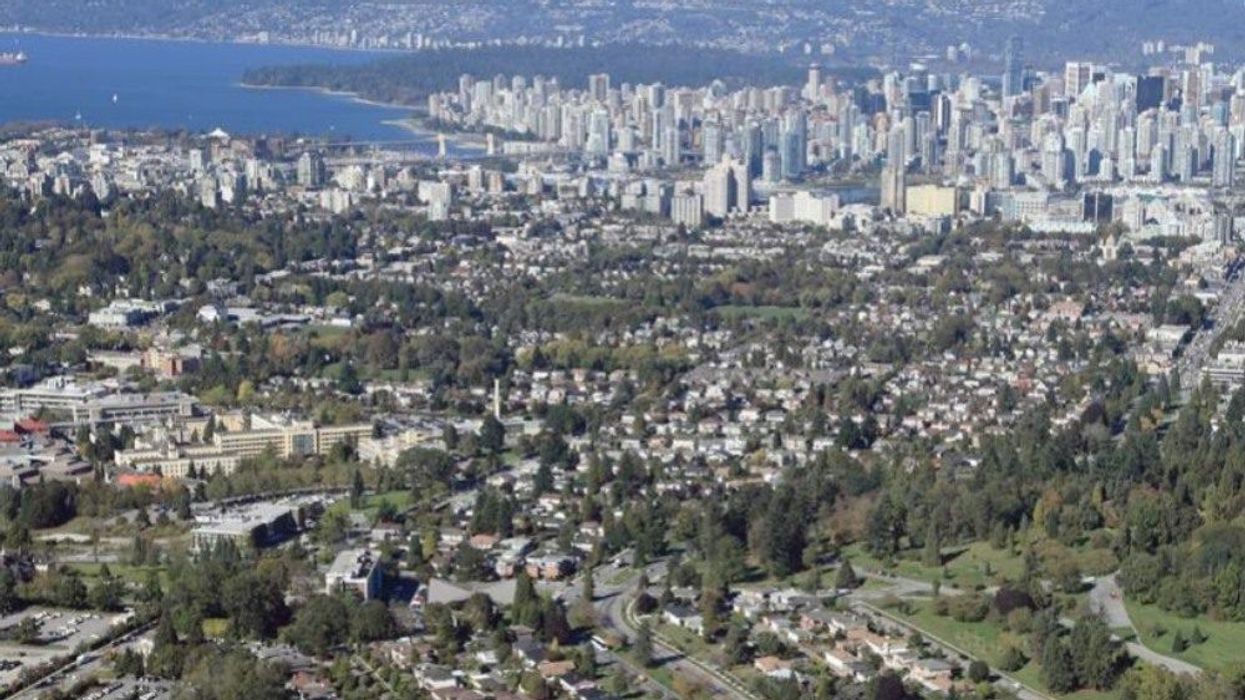On Tuesday, Vancouver City Council approved the large-scale rezoning of a significant portion of the Cambie Corridor, allowing townhouses and rowhouses to be built without having to go through an often-lengthy rezoning process.
The City-led zoning changes -- or "pre-zoning" -- come as part of Phase Two of the City's plan to rezone all areas of the Cambie Corridor that have been identified for townhouses and rowhouses, as laid out in the Cambie Corridor Plan.
Phase One, approved in 2018, saw the City rezone 167 lots in the Cambie Corridor from RS-1 and RT-1 to RM-8A or RM-8AN, which allows for townhouses and rowhouses with a maximum floor space ratio (FSR) of 1.20 and a maximum height of 37.5 ft.
"The RM-8A/AN zones were created to address the need for new housing forms," the City says, in a nod to missing middle housing. "Minimum family units and size requirements are specified, allowing a diversity of housing type, choice, and affordability."
Phase Two, approved on Tuesday, rezones an additional 220 lots, and the City says that land value and property taxes are not anticipated to increase as a result of the rezoning, and building/rebuilding a single-detached home remains an option.
Over 1,110 lots in the Cambie Corridor were identified for townhouses and rowhouses in the community plan, and the City says that after the two phases and developer-initiated rezonings, approximately 50% of those lots have now been rezoned.
With the rezoning changes, any party who wants to build a townhouse or rowhouse on those sites can proceed directly to the development permit stage, cutting a significant amount of time that otherwise holds back the speedy delivery of much-needed housing.
The rezoned parcels also allow for an additional density bonus between 0.75 FSR and 1.20 FSR, with a cash contribution, which is also allowed for developer-initiated rezonings of sites not yet rezoned by the City.
The large-scale rezoning has been primarily guided by infrastructure capacity and limitations. In a report recommending the Phase Two changes, City staff said their analysis revealed that the 220 lots identified "do not trigger off-site sewer improvements" and "as such, these properties are not required to provide significant utility enhancements that are typically captured through a rezoning process."
The City says that they will continue to analyze the remaining sites that have been identified for townhouses and rowhouses and whether utility upgrades will be required, but that those sites remain eligible to be rezoned through the traditional rezoning process in the meantime.

According to the City, these changes follow public consultations that began in January. This included mailing out approximately 330 information postcards about the rezoning changes to property owners and tenants in the Cambie Corridor area, as well as consultations with Homebuilders Association Vancouver, the Urban Development Institute, and BC Assessment.
The City says that although this City-initiated rezoning limits its ability to "secure infrastructure and other improvements to support growth" (through Community Amenity Contributions), this approach reduces the need for individual rezonings, which "streamlines the development process, provides certainty for future applicants, and helps reduce the costs and risk associated with developer-initiated rezoning."
READ: City of Vancouver Looking at New Rezoning Application Prioritization Process
"This change provides certainty and has the potential to save between 10-12 months of processing time when building more family-oriented housing in the Cambie Corridor," said Mayor Ken Sim in a press release on Wednesday. "Vancouver needs more housing of every type, and reducing wait times for housing development is a priority for us."
A map of the now-rezoned parcels can be found here.





















